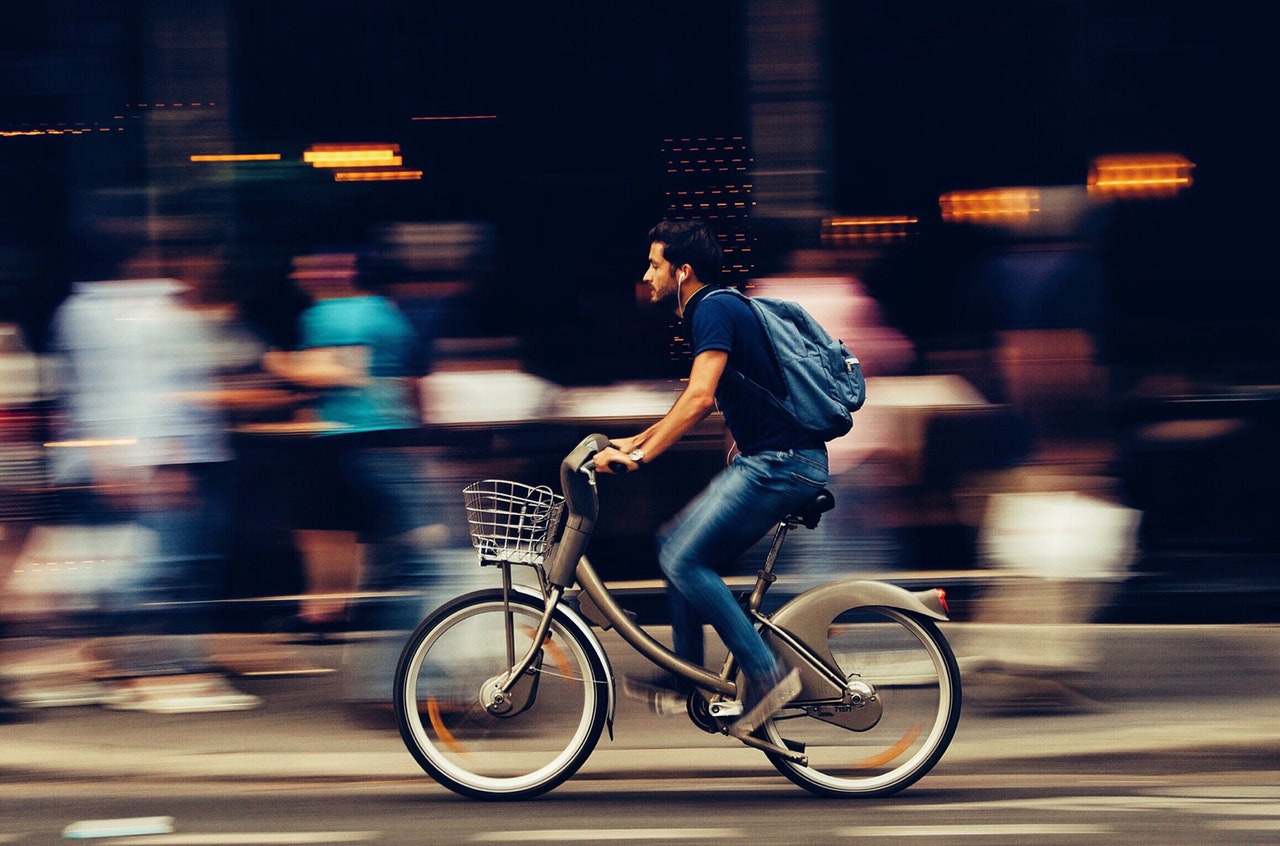Something In The Air: Biking Could Be Hazardous To Your Health

Man biking on a city street
Columbia University reseachers investigate if the air pollution that cyclists are exposed to could lead to heart disease
Biking to work may be a quicker and more environmentally friendly way to commute in New York City. But researchers are collecting data on how pollution could impact riders’ health.
Picture this: you’re pedaling along twelfth avenue in Manhattan behind a diesel truck trying to get to work on time. Before you know it, the light turns red and the truck stops short, emitting fumes into the air right in front of you. You’re breathing heavy from your vigorous ride and breathing in whatever was spewed into the air right before you stopped.
Columbia University Scientists are looking into whether these frequent intakes of pollution could lead to an increased risk of heart disease. Researcher Qiang Yang says subjects who participate in Columbia’s study gear up with air monitors five or six times a month in order for data to be collected. “We ask them to send all the devices and air monitors back. And then we look at the data and also generate or some up reports. A very brief summary of the reports as well as making some nice maps about where they went and what’s the level of air pollution they were exposed to,” Yang said.
Yang’s team is using these summaries and to see what biking in the city might mean for rider’s health. The program needs riders who bike through the city on a regular basis to have repetitive measurements. “We particularly look at some health outcomes such as blood pressure change and um heartrate variability change um after biking and also exposed to various networks of air pollutants in the city. So in this project we particularly look at frequent bikers in the city.”
Richard Sloan is a cardiologist at the University. He says breathing in pollutants affects short term blood pressure, but that’s something riders won’t feel. “The more you ride through areas of greater pollution, the more and longer you’re going to have a reduction in heart rate variability. And so that’s one of the presumed mechanisms by which heart disease develops,” Sloan explained.
Yang took us on a virtual 3-D video tour of what he experienced throughout a nearly three hour bike ride. The ride was mapped out to pass through congested parts of the city, like Port Authority, and more green areas, like the Hudson River Greenway. Yang says there was a spike in pollution when he was crossing 12th Avenue to get from the Hudson River Greenway to more congested parts of the city. Which he said made sense.
Yang’s team also found some more surprising results when he got stuck behind a truck that was not spewing noticeable pollutants. “This truck was probably using clean energy sources because I didn’t really smell anything from the truck. But when I look at the data I can still see a peak of black carbon and fine particle when I was waiting right after the truck for the traffic signal.”
Cardiologist Richard Sloan explained because bikers are potentially breathing heavier, they could be taking more of that in than someone strolling along. “If you breathe 30 breaths a minute as opposed 10 breathes a minute, you’re gonna breath in three times as much particulates. So while you’re gaining the cardio protective benefits of exercise you’re also increasing your exposure to particulates which have precisely the opposite effects,” Sloan said.
Columbia University researchers are half way through a five year study and are still looking for volunteers to collect data while cycling to where they’re going.

